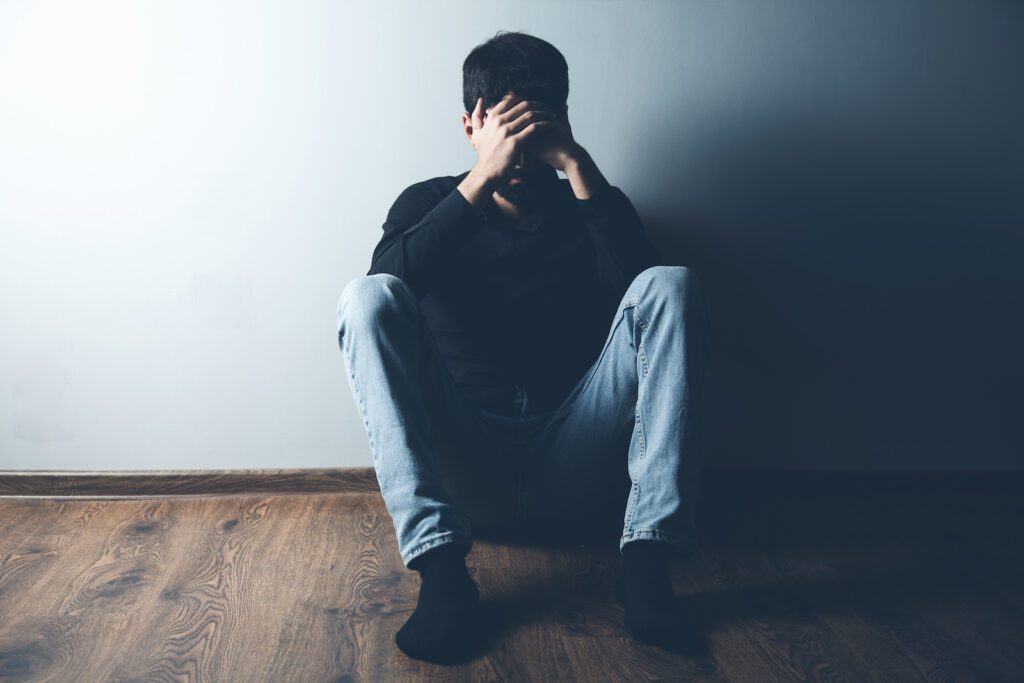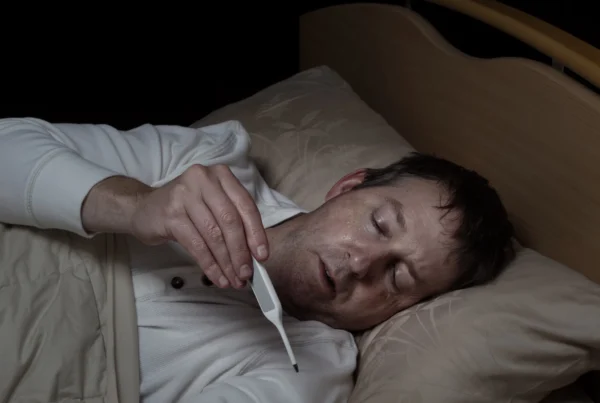
Table of Contents
Painkillers are some of the most commonly prescribed medications, and there are many reasons you might need painkillers, either short-term or long-term. They can be useful for helping you recover from an injury, get through post-surgical pain and physical therapy, and manage long-term illnesses and injuries.
People with chronic pain may also need high-strength painkillers to manage their symptoms, which may or may not be needed daily.
The problem is that painkillers can cause physical dependency, depending on what kind of painkiller you’re prescribed, and many also have a high risk of addiction. Painkillers designed for managing the pain from broken bones, cancer treatments, and post-surgical pain can quickly lead to addiction, sometimes without you even noticing it.
Those addictions can eventually lead you to take painkillers you don’t need, which can have serious consequences for your health, personal life, and professional life.
Worse, some people take painkillers they don’t need for recreational reasons. Opioids, and some other kinds of painkillers, can give you a high feeling that some people use to relax or party.
Recreational use of painkillers isn’t safe, though, and is significantly more likely to cause addictions than prescription painkillers used responsibly.
Here’s what you need to know about the side effects of painkiller addiction, how you can spot painkiller addictions when they get started, and the withdrawal symptoms and timeline when you decide it’s time to overcome them.
Let’s take a closer look.
What Are Some Of The Side-Effects Of A Painkiller Addiction?
Painkiller addictions can have more side effects than other addictions, and the longer you are addicted, the more likely you are to have serious side effects.
It’s important to know that some of the side effects of a painkiller addiction can also be a sign that the painkillers are causing some damage to your body. Those side effects can last for quite a while, even after you’ve stopped taking painkillers.
It can also be difficult to tell some symptoms of painkiller addiction that are normal side effects of the painkillers apart from the symptoms that are signs of a more serious problem.
That’s one of the most dangerous parts of painkiller addiction. If you accidentally cause liver damage or other problems, you might not know that it’s happening right away.
With that in mind, paying close attention to any side effects from the painkillers you’re taking is important. Even if you’re taking painkillers with a legitimate prescription and good reason, you should still track and pay attention to the side effects of the medication.
Here are some common side effects of painkiller addiction.
- Constipation
- Nausea
- Dizziness
- Feeling high/Euphoric feelings
- Confusion
- Drowsiness
- Irritability
- Slowed breathing
- Increased sensitivity to pain
These symptoms can worsen over time, especially if you increase your dose because you’re developing a tolerance to the drug.
Increased sensitivity to pain, specifically from opioid medications, can make it harder to stop taking the drugs. Even normal pain can seem significant and be hard to work around after you’ve gotten used to taking opioid pain medications daily or relatively often.
Constipation from opioid painkillers often also gets worse over time. Chronic pain patients may need to take laxatives or fiber supplements to help deal with this side effect. Addicts may have similar constipation levels but may not have as many tools to deal with the side effect.
Additionally, confusion can be a symptom during and after the high from painkillers. Pain and normal sensation can be disorienting if you’re used to taking painkillers regularly, and it can take a little while before your body and mind readjust to normal inputs.
Depending on your painkiller, you may also have more serious side effects. Like other side effects, these serious problems are more likely the longer you take the drug. In addition, mixing drugs or taking several different medications within a few days of one another can increase your risk of serious side effects.
- Low blood pressure
- Slow breathing
- Not breathing/forgetting to breathe
- Coma
- Memory problems
- Seizures
- High body temperature
- High blood pressure
- Paranoia
- Hallucinations
- Aggressiveness
- Tremors
These additional side effects are serious and may need immediate medical attention. Call 911 if you or a loved one is breathing too slowly, isn’t breathing at all, is running a high fever, can’t be woken up, or starts to have a seizure.
Headaches, dizziness, and fainting can all be signs of serious blood pressure issues, which means that you may want to consult with a medical care provider if you have any of those symptoms.
If you or a loved one do experience a medical emergency as a result of a painkiller addiction, it’s important to make sure you are honest with any medical care providers helping you. Their job is to counteract the medications and to keep you alive and healthy, not to persecute you or shame you for your addiction.
Warning Signs Of An Addiction To Painkillers
Even with the serious side effects you can get from painkillers, many people still develop addictions, either because they become addicted after getting a legitimate prescription for the medication or because they start taking the medication to relax or escape from problems in their lives.
There are a lot of warning signs of addiction, but before we get into the signs that someone you love may be addicted, let’s talk about the risk factors that can increase the chance you or someone you love will develop an addiction if you take certain kinds of painkillers.
- Previous or current history of mental illness
- Previous or current use of nicotine
- Isolation
- History of abuse or neglect
- Genetic risk factors
- Peer pressure
All these factors can make you more likely to become addicted if you take painkillers. Unfortunately, genetic risk factors can be difficult to spot, especially since we don’t know exactly what genes are involved in addiction risk. However, we do know that there is a genetic component that contributes to addictive tendencies in families.
Suppose you have family members, especially immediate family members, who have had substance use disorders or previously had substance use disorders. In that case, genetic factors may increase your risk of painkiller addiction.
Now that you know a little more about risk let’s talk about warning signs of addiction.
These warning signs are good ways to tell if you are developing an addiction, already have one, or can help you spot addiction in the people close to you.
Every addiction is different, so everyone with an addiction will act a little differently as well. It’s important to remember that addictions are also influenced by your personal life and the support systems you have around you.
Here are some strong indicators of addiction:
- Looking for painkillers from places other than your doctor
- Shopping for other doctors
- You take more than your doctor prescribed
- You take less than your doctor prescribed to stretch out your supply
- You’ve ordered or considered ordering prescription medications online
- You worry about being yourself without the medication
- You feel like you need to take the medication before social events
- You feel like you can’t sleep without the medication
- You get anxious or upset between doses
- You feel angry if someone tries to talk to you about your use of painkillers
From the outside, addiction can look like this:
- Sudden changes in behavior or extreme changes in behavior
- Dilated pupils
- Suddenly avoiding contact with friends and family
- Avoiding contact specifically at certain times of the week or month
- Rapid weight loss or weight gain
- Changes in fashion, especially starting to wear long sleeves suddenly
- Changes in performance, especially sudden drops in professional ability
- Moodiness, anxiety, irritability
- Missing medications in your home, or the homes of other people close to the addicted person
- Burnt or missing spoons in your home
- Frequent flu-like symptoms
If you think someone near you is addicted to painkillers or other substances, it’s a good idea to talk to others around them to see if other people are seeing signs of addiction. Especially if other people are seeing signs of addiction, you may want to consider talking to them about the problem.
Remember that your loved one is likely to get upset or angry when you talk to them about their addiction. You can bring in other help if you need it to help manage emotions or if you need additional resources to help you.
Withdrawal Symptoms & Timeline From An Addiction To Painkillers
Withdrawal from painkillers can be difficult, but being prepared for withdrawal and ready with the support you need can make it a lot easier and help you get through withdrawal and into addiction recovery.
Here are some of the symptoms you can expect when you’re withdrawing from addiction:
- Restlessness
- Muscle Aches
- Teary eyes
- Insomnia
- Runny nose
- Sweating
- Frequent yawning
- Diarrhea
- Cramping
- Dilated pupils
- Vomiting
- High blood pressure
- Rapid heart rate
In extreme cases, seizures and coma may also be symptoms of withdrawal. If you cannot keep down liquids or your symptoms become more severe than you can reasonably handle at home, it’s important to contact medical professionals for more help.
How To Get The Help You Need For An Addiction To Painkillers
Withdrawal from painkillers can be difficult to get through. But, with medical support and people willing to help you through your detox, withdrawal, and recovery, you can do it.
If you’ve become addicted to painkillers, especially if you’ve been addicted for a long time, withdrawing under medical supervision in a treatment center may be a good idea. Treatment centers can also help you further along in the withdrawal process, which is important if you’ve tried to overcome your addiction before, have a serious addiction, or don’t know if you have the tools you need to truly make it in recovery.
Remember, addiction is complicated, and recovery can be difficult, but you don’t have to do it alone.
If you’re ready to overcome your painkiller addiction or want more information about an addicted loved one, Ocean Recovery is here to help you.
Sources:
Ocean Recovery has sourcing guidelines and relies on peer-reviewed studies, academic research institutions, and medical associations for our references. We avoid using tertiary references as our sources. You can learn more about how we source our references by reading our Editorial Policy.
- Mayo Clinic. Prescription drug abuse – Symptoms and causes. Mayo Clinic. Published October 19, 2018. Accessed August 13, 2022. https://www.mayoclinic.org/diseases-conditions/prescription-drug-abuse/symptoms-causes/syc-20376813
- Tyler M. Risk Factors for Addiction. Healthline. Published August 25, 2016. Accessed August 13, 2022. https://www.healthline.com/health/addiction/risk-factors
OCEAN RECOVERY EDITORIAL GUIDELINES
The internet contains a vast amount of misinformation, but when it comes to your health only peer reviewed, research centered data matters. At Ocean Recovery, all content published throughout our website has been rigorously medically reviewed by a doctorate level clinician, and cross checked for medical accuracy. Our editorial process helps our readers trust that the information they are consuming is factual and based upon scientific data. Your health is our top priority, find out more about how we safeguard the integrity of information on our website. Read More About Our Process






